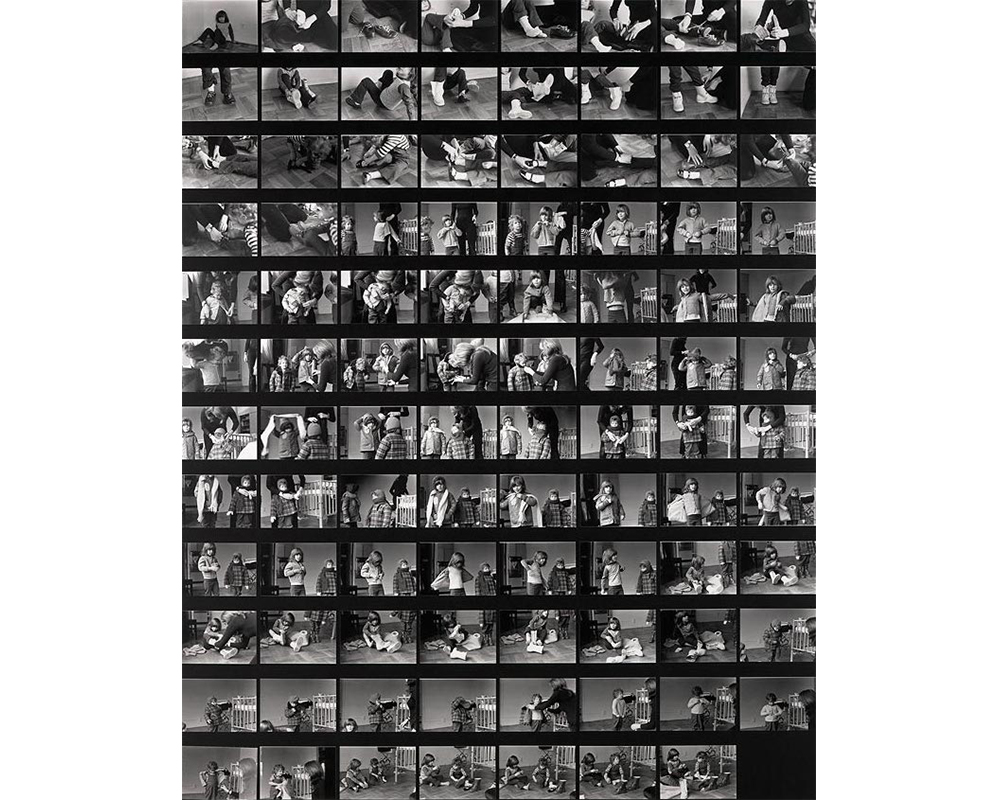
On Mierle Laderman Ukeles’s “Dressing to Go Out/Undressing to Go In” (or, Don’t Try This At Home)
Emily Tyburski '20J was a Cunningham Center Student Assistant during the summer of 2017. She is an American Studies major and member of the class of 2020J.
The essay “The Personal Is Political” by Carol Hanisch was published in the the volume Notes from the Second Year: Women's Liberation in 1969. Hanisch’s text sparked a global conversation around the importance of multiracial feminism and introduced the idea that a woman’s political and social struggle is dependent on her individual identity because women are economically oppressed by the government and its’ institutions. Implications of this issue can be seen in Dressing to Go Out/Undressing to Go In (1973) by radical feminist performance artist and postmodern pioneer Mierle Laderman Ukeles. I would argue that this artwork is not about domestic femininity, but it is meant to open conversation about the capitalized female body within the broken economic systems that profits from its’ [the body’s] physical labour.
The hurried, active quality of the photographs that comprise the work allows viewers a glimpse into what ‘motherhood’ could have looked like for a working female artist during one of the more pivotal moments of second-wave feminism in America.
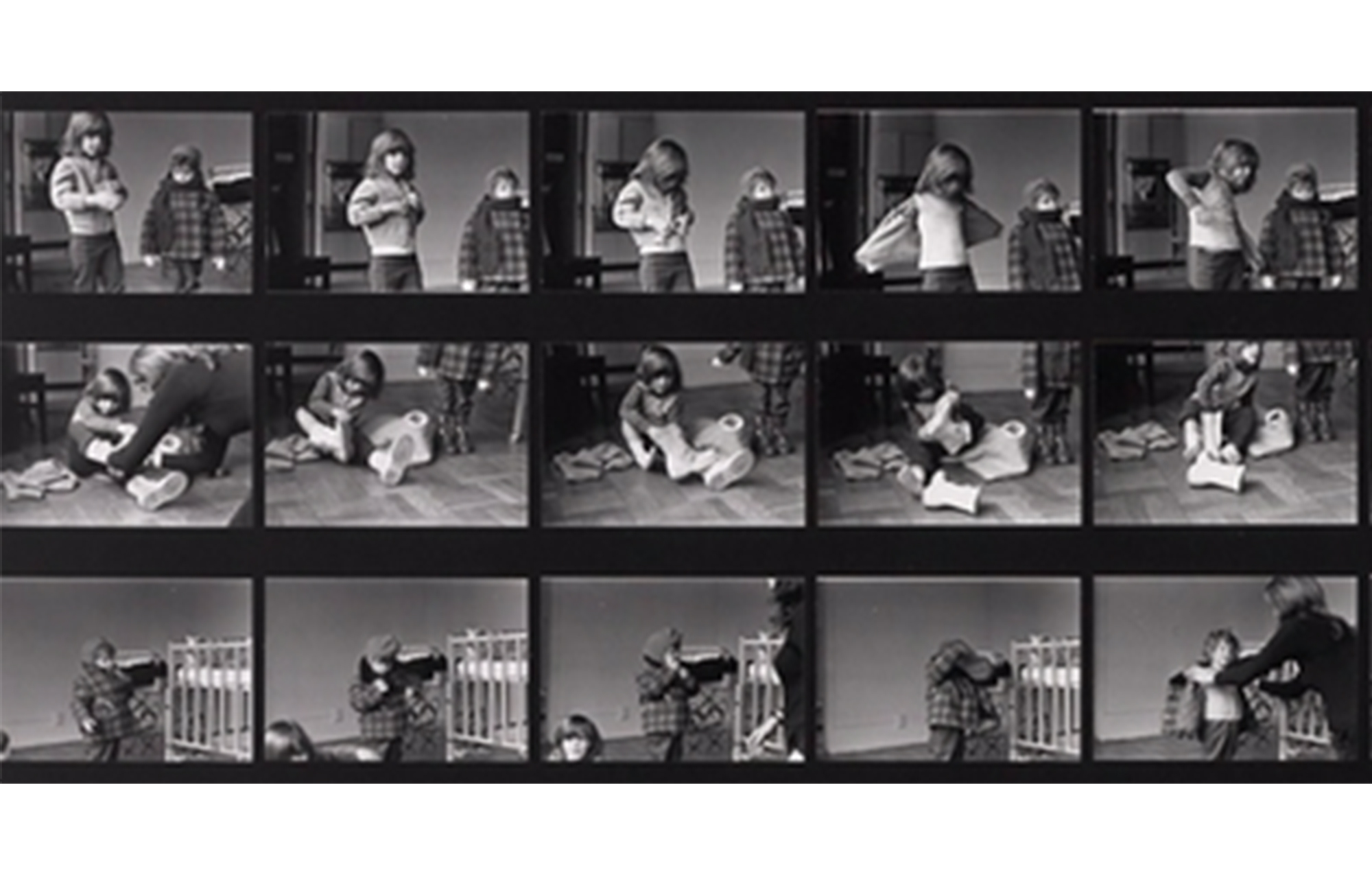
Mierle Laderman Ukeles, Dressing to Go Out/Undressing to Go In (detail)
The images show the artist and her children in their apartment. Both children are seated, and appear to be waiting patiently as Ukeles helps them meticulously fasten Mary-Jane style footwear: a task that, perhaps by now is nearly ritualistic to them as a morning routine. Next, Ukeles is shown reaching behind the torso of one of the children to adjust the jacket — a gentle, maternal gesture, judging by the size of the tiny child in relation to both Ukeles and the coat. She then places the second coat on the second child, perhaps a bit more hurried this time as if they are on an actual schedule.
Continuing the sequence, one of the children begins a small dance weaving a long scarf around her neck. Approximately three-fourths in the sequence, there is a visual shift as the children scramble to de-layer themselves again, discarding their clothes on the floor. Compositionally the photographs capture the task by using repetitive framing and sequential imagery. The actions in each image are more than a second in- time apart from each other, leading viewers to believe that Ukeles may have selected the photographs to emphasize that each still is equally contributing to the overall meaning of the work.
Instead of a final picture in the corner, Ukeles has attached a chain and dust rag allowing the work to operate as a three-dimensional object, versus a two-dimensional window on the world.
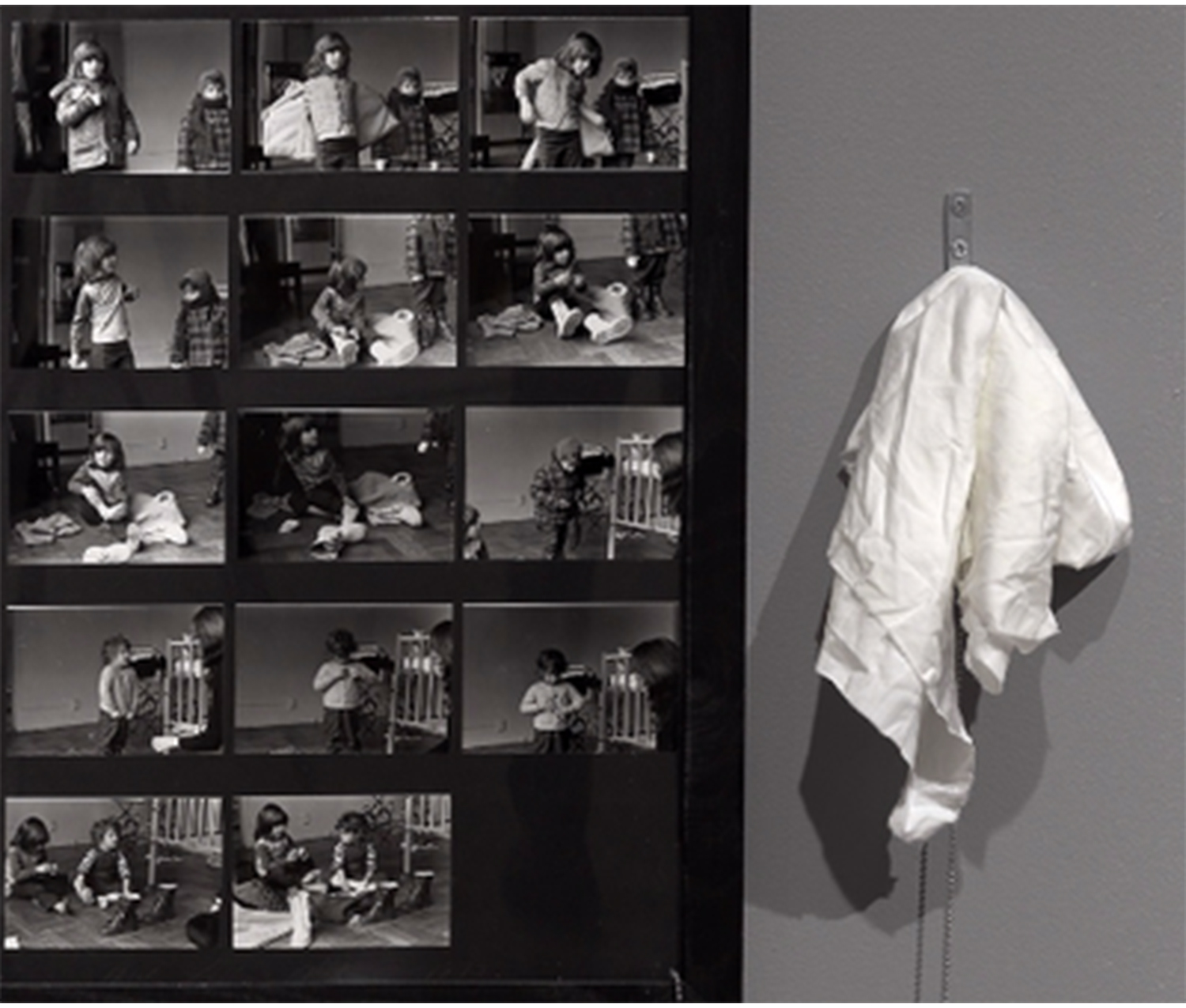
Mierle Laderman Ukeles, Dressing to Go Out/Undressing to Go In (detail)
Dressing to Go Out/Undressing to Go In was created only a few short years after “The Personal Is Political” was published, and the phrase became part of popular culture. Ukeles wrote her own artist manifesto that same year, (“Maintenance Art 1969!”) in which she outlined her proposal that labor, and in particular, women’s domestic labor, could be seen as art.
The bulk of Ukeles’s other work is in performance, although her practice is generally grounded in social outreach ideas including paid maternity leave, a higher minimum-wage, and other humanist objectives concerning the social welfare of others. Her work can also be seen to relate to the systematic suffering and invisibleness of exploited work groups within the American economic system, which is how I am choosing to frame my discussion about this artwork. From factories to fashion workers: Women workers, broadly speaking, are the bodies that make up the physical infrastructure of capitalism. By creating pieces that expose labour fallacies artists like Ukeles may be able to reclaim some agency for those who are silenced.
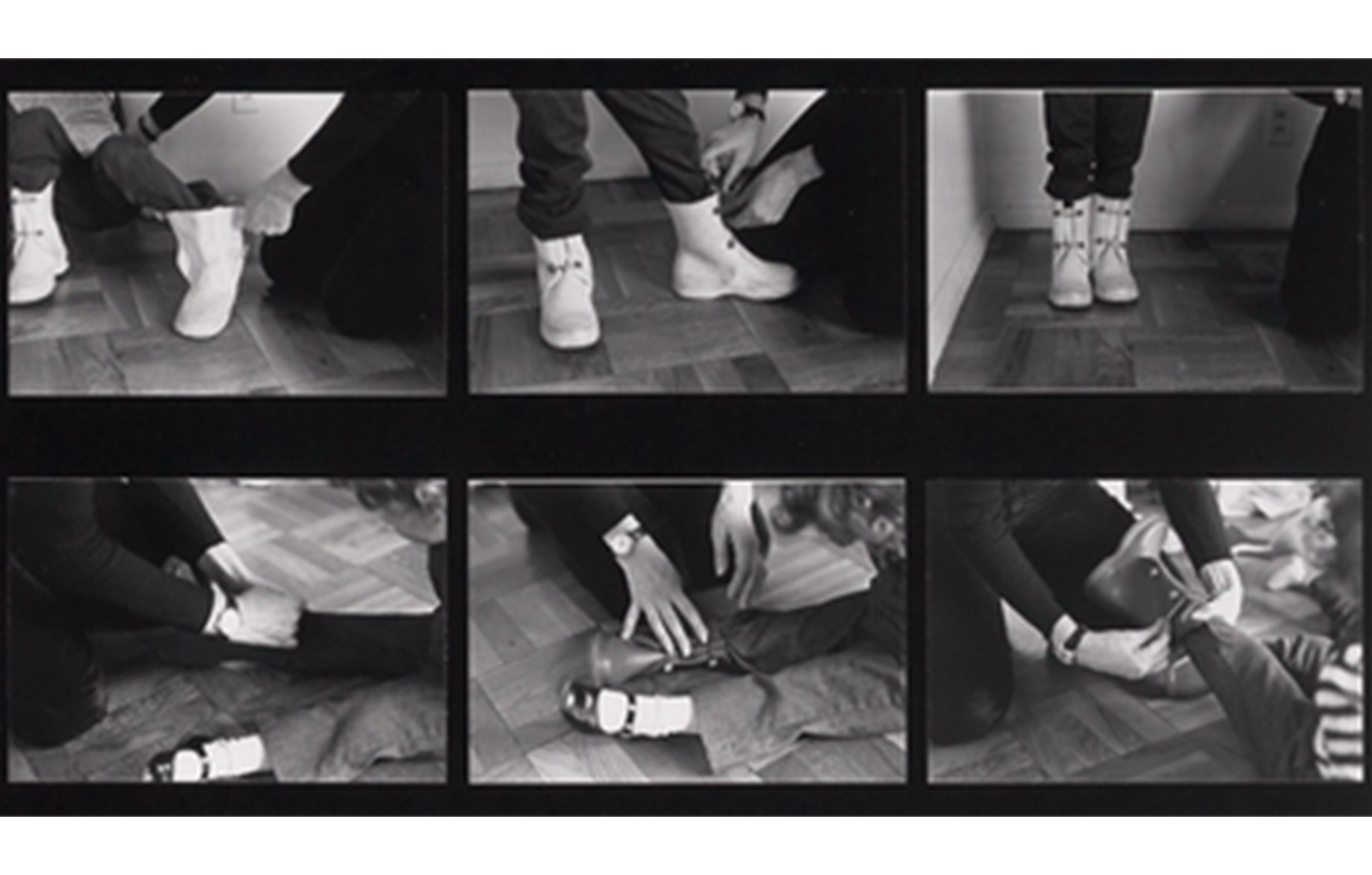
Mierle Laderman Ukeles, Dressing to Go Out/Undressing to Go In (detail)
Although this piece, and other works created by Ukeles, can be seen to comment on capitalism’s interdependence on domestic labour to fuel its’ mode of production, that is a topic that I don’t know if the artist is necessarily asking viewers to do here. Placing an artwork in a metaphorical box of social justice, and assuming that it is speaking toward a socio-political feminist ideology, is like assuming that all of postmodernisms — and its’ contemporaries— are a piercing call to justice, which, frankly, they aren’t. That act of classification is what a Modernist critic would refer to as a “cliche” or an inherent flaw: that identity will never be able to represent itself in full because the social construct of visual reality has made it nearly impossible to take ourselves (and our labouring bodies) out of the art discussion. This lobbies for the idea that art for art’s sake is nearly nonexistent, and that work will always have some sort of disturbing or challenging quality depending on one’s social understanding of it.
And though the maker here is a woman, the work also reaches a level of understanding of the subordination of more than just those who share that identity. The phrase "The Personal is Political" was also adopted by multicultural feminist movements, which moved away from using the word "feminism" to mean only white women activists.
Despite the fact that the images are drawn from the artist's personal experiences, I believe it is a mistake to assume that this work is about Ukeles's personal identity as a feminist, or that it is speaking directly to women's institutional oppressions. Thus, what is often lost when considering a body of work, such Mierle Laderman Ukeles's "maintenance art," is assuming that the piece is drawing from Western-feminism and ignoring other contemporary ideas. Art of any provocative nature will stir productive conversations, without making explicit statements. Mierle Ukeles's Dressing to Go Out/Undressing to Go In thus engages ideas that were pertinent to her time and continue to be a rich subject for exploration today.
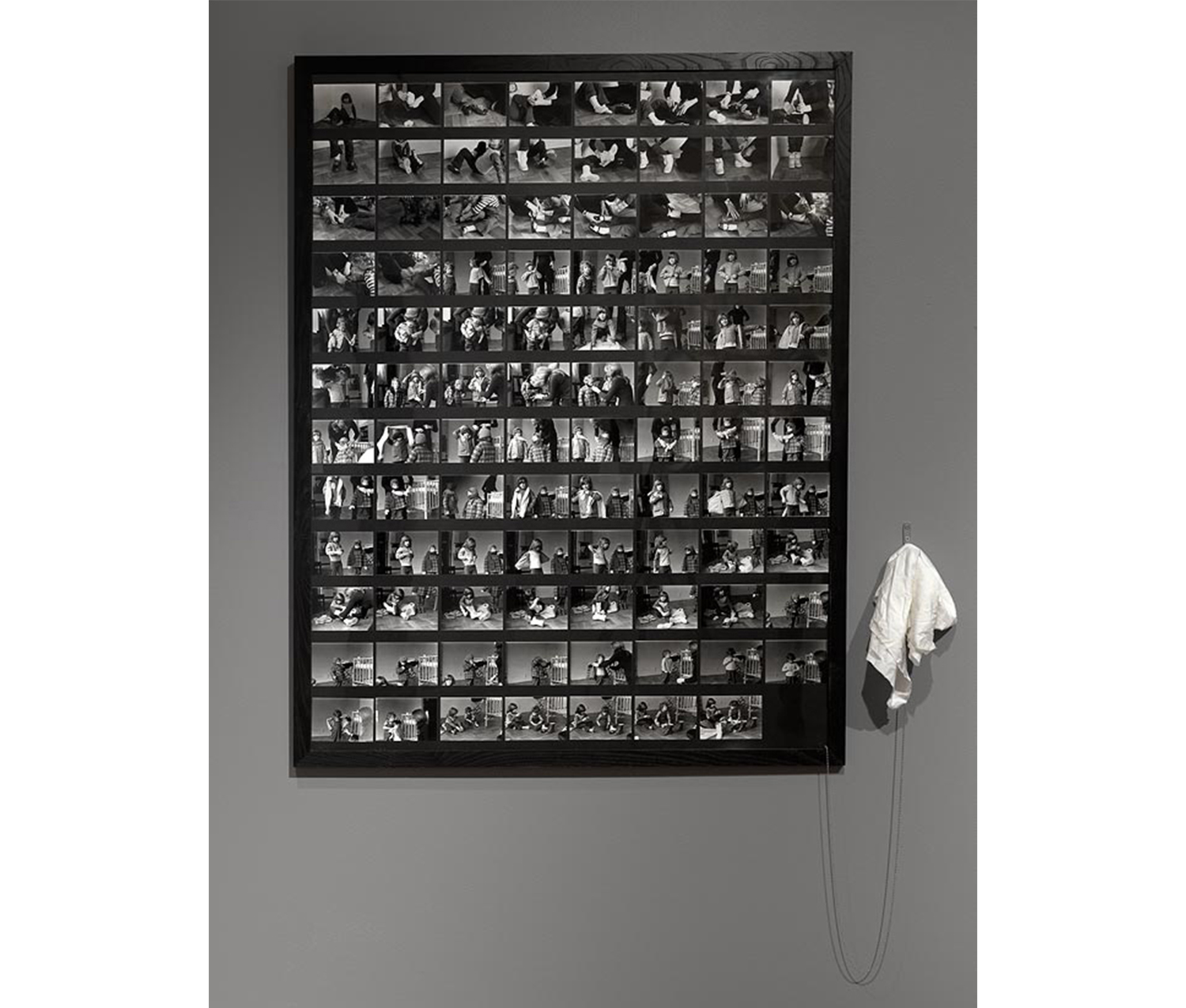
Mierle Laderman Ukeles. American, born 1939. Dressing to Go Out/Undressing to Go In, 1973 (printed 1998). Ninety-five black and white photographs mounted on foamcore with chain and dustrag. Purchased with the Judith Plesser Targan, class of 1953, Fund. SC 2009.21.